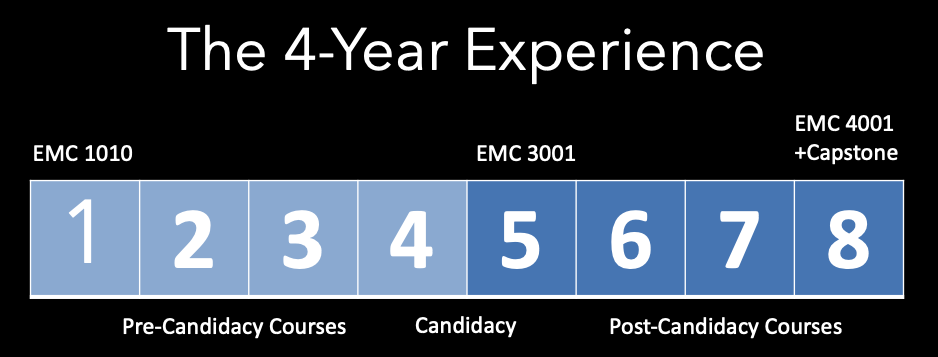Students in Media Arts programs will benefit from a range of advancements in curriculum for 2020-21 and beyond. These changes are collectively called Media Arts 2020, a vision for student success. Students enrolling under MTSU’s 2020-21 Catalog will be under these advancements. Students on older catalogs may enroll in the new classes as electives, or talk with their advisors if they wish to switch to the new catalog.
What’s new for the 2020-21 Media Arts catalog:
- Three new Student Success courses
- All Media Arts programs now have senior capstone courses
- Candidacy updates
- Updated graduation requirements
- Many new courses and changes to a few existing courses
- Video and Film Production has two new concentrations: Filmmaking and Live Production
The seven four-year programs offered in Media Arts are:
- Animation
- Interactive Media
- Media Management
- Photography
- Video and Film Production
- Filmmaking
- Live Production
Three new Student Success courses in Media Arts
In Fall 2020, Media Arts is introducing three new Student Success courses spread across the 4-year college experience. These courses will help students at critical points during their education. Each is one credit hour with pass/fail grading and required for graduation.
- EMC 1010 – Introduction to Media Arts, “How to college”
- EMC 3001 – Success in Media Arts, “How to upper division”
- EMC 4001 – Professional Practices in Media Arts, “How to get a job”
Senior Capstone courses in Media Arts
Senior capstone courses are culminating experiences in which students identify their own project to produce as a primary portfolio piece, and as an example of the work they wish to pursue after graduation. This is a student’s greatest opportunity to demonstrate what they have learned in their major. Capstone courses should be taken in the senior year – and preferably in the final semester. Unlike a typical lecture or lab class, capstone instructors are more like coaches, helping students achieve their vision to complete their projects at their greatest level of competence.
Animation and Interactive Media have had capstone courses in place for several years, and this year all other Media Arts programs launch theirs.
Video and Film Production launches concentrations in Filmmaking and Live Production
Since its beginnings in the early 1970s, the Video and Film Production program has delivered skills, knowledge, and experience that relates to both television and film production. Over the last few years, the distinct curricula for film and television have grown and evolved, but remained as options within the overall program. New concentrations for Filmmaking and Live Production have been created to provide students with specific and deeper curricula in each of those disciplines. The classic, blended program also remains available.
Video and Film Production Bachelor of Science degree program now offers three ways to major:
- Video and Film Production, the classic, blended program
- Filmmaking concentration
- Live Production concentration
Making the most of the 4-year college experience

Candidacy is a set of performance requirements that students must meet half-way through the degree program before advancing into junior and senior (upper division) courses. Achieving candidacy is sort-of a mini-graduation to the next level. It’s also a milestone for students to recognize whether their chosen major is a good fit for their aptitudes. If not, students still have time to shift to a different major that may be a better fit.
Media Arts candidacy requirements have changed this year to include the new student success courses, capstone courses, and other changes specific to each program.

